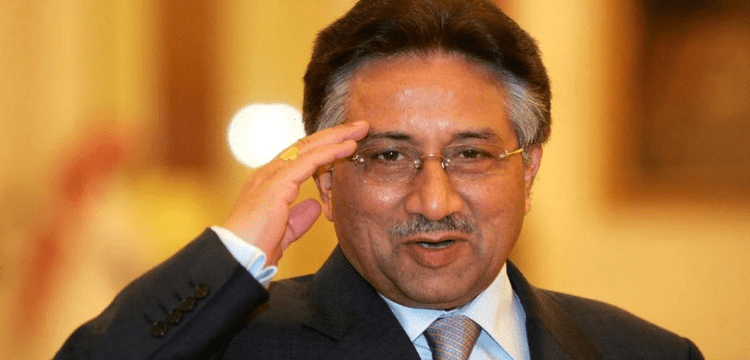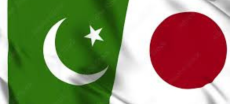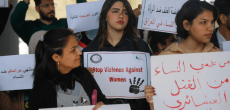[vc_row][vc_column][vc_column_text dp_text_size=”size-4″]Gen. (retd) Pervez Musharraf, the former head of the military, will be taken back to his native Pakistan for his final funeral, leaving behind a legacy of the last military junta’s turbulent, long-lasting administration.
He passed away early on Sunday while receiving treatment for a rare ailment at the American Hospital in Dubai.
Musharraf has left behind a legacy that includes some unanswered questions as well as some unmatched distinctions, from leading the nation into war to positioning Pakistan as a front-line state in the post-9/11 war on terrorism, to ushering in an era of peace talks with India and being indicted for high treason in his later years before fleeing into exile.
But more significantly, his rule will be remembered for virtually resolving long-running disputes between India and Pakistan after secret discussions between the two nations made historically significant progress on the Kashmir issue.
The intention behind the decision to dismiss Gen. Pervez Musharraf, a four-star general, and four other senior officers on October 12, 1999, and replace them with ISI Chief Lt. General Zaiuddin Butt was to hold them accountable for the disastrous Kargil operation.
Musharraf was charged with starting the Kargil operation without telling Nawaz, and the misadventure was meant to sabotage the Pakistan-India peace effort.
Atal Behari Vajpayee, the then-Indian prime minister, had taken a historic bus trip to Lahore months before the start of the Kargil war. This trip revived hopes for a new beginning in relations between the newly proclaimed nuclear South Asian neighbours.
However, the decision to remove Musharraf from office backfired as his underling generals moved quickly to depose Nawaz.
While the months-long disputes between Nawaz and Musharraf were blamed for the military coup in 1999, the elected government was overthrown by disagreements between the civil and military leadership over the issue of India.
However, after assuming the position of military dictator, General Musharraf was given a larger responsibility, one that included managing not just the army but the entire nation. His perspective of the world, and especially his attitude toward India, shifted at this point.
The same Musharraf who cancelled the hopeful peace initiative between India and Pakistan began to follow in Nawaz’s footsteps by attempting to mend fences with New Delhi. In reality, since he was the army head and had authority over the security establishment, he went a little further to make contact with India.
Even though the infamous Agra meeting between Musharraf and Indian Prime Minister Vajpayee failed, it set the stage for further negotiations between the two nations.
India decided that it might be best to forget the time when Pakistan was ruled by a military dictator who had the ultimate power because previous attempts to resolve disputes with Pakistan failed because the civilian governments didn’t have much input in relations with New Delhi.
The two sides subsequently ushered in a period of covert and open peace negotiations that increased the likelihood of successfully resolving the long-running Kashmir dispute.
It was believed that the peace process’ most fruitful phase, which lasted from 2004 to 2007, saw real advancements on a number of important issues, including Kashmir.
It was made simple for Kashmiris residing on both sides of the LoC to travel about. In the contested territory, trade channels were opened.
All of this was intended to come to a head in early 2007 with a summit conference between Gen. Musharraf and the current prime minister, Dr. Manmohan Singh.
Sir Creek and Siachen agreements were scheduled to be signed by the two nations during the eagerly awaited visit of the Indian Prime Minister.
More importantly, the Kashmir problem made significant progress in secret negotiations between the two nations.
The exchange of non-papers was being discussed as an unconventional approach by the two parties.
The disputed area would be under joint supervision, residents could move freely between both sections of Kashmir, and troops would finally be withdrawn, according to a four-point plan.
In his book, former foreign minister Khurshid Mehmood Kasuri said that an agreement between the two nations was imminent.
But in March 2007, as Manmohan Singh’s visit was being organised, Gen. Musharraf abruptly fired Chief Justice Iftikhar Muhammad Chaudhry. The legal community responded angrily to the dismissal.
Political parties later joined the movement, making Musharraf extremely unpopular. Manmohan’s visit never happened because of the political unrest the lawyers’ movement created. The two nations might have agreed on Kashmir if Pakistan’s political unrest had not taken place.
Some claimed that Musharraf’s own generals were unhappy with him at the time because of the way he wanted to resolve the Kashmir conflict. They believed that the generals were trying to prevent Musharraf from reaching an agreement with India on Kashmir by using the lawyers’ movement to attack their own boss.
Brevity of time
The events that happened before, during, and after his rule are depicted in the timeline below.
On October 6, 1998, Gen. Pervez Musharraf was chosen to replace Gen. Jahangir Karamat as the head of the army.
Kargil War with longtime foe India begins on May 3, 1999; it lasts until July 6, 1999.
On October 12, 1999, Musharraf led a bloodless military coup that toppled Nawaz Sharif’s three-term administration.
Musharraf takes office as Pakistan’s president on June 20, 2001, following a contentious vote.
He holds the nation’s general elections on October 10, 2002, ushering in the Pakistan Muslim League-Quaid-e-Azam (PML-Q) and its supporters.
On November 3, 2007, President Pervez Musharraf proclaimed a state of emergency and suspended the 1973 Constitution, rendering the supreme court’s 61 judges—including Chief Justice Iftikhar Muhammad Chaudhry—ineffective.
All private networks fall off the air, and only the state-run PTV issues an emergency declaration that cites the “visible ascendancy in the activities of radicals” as justification for its imposition.
Nov. 28, 2007: Gen. Ashfaq Parvez Kayani assumes command of the army when Musharraf departs from the military to devote all of his time to politics.
On November 29, 2007, the retired general took the presidential oath.
Dec. 15, 2007: President Musharraf ends the 42-day state of emergency, revokes the Provisional Constitutional Order, and reinstates a Constitution that has been altered through presidential decrees.
A new oath is taken by the chief justices and judges of the Supreme Court, high courts, and Federal Shariat Court.
On June 7, 2008, Musharraf unequivocally states that he has no intention of leaving office or moving abroad.
August 18, 2008: President Musharraf steps down from his position after nine years in power, preventing the threat of impeachment.
[/vc_column_text][/vc_column][/vc_row]











